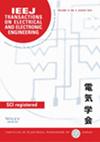下载PDF
{"title":"Multi-Agent Trips Simulation-Based Charging Demand Forecasting","authors":"Yi Qiang, Yifei Zhou, Goytom Desta Gebreyesus, Shigeru Fujimura","doi":"10.1002/tee.70022","DOIUrl":null,"url":null,"abstract":"<p>As the market penetration of electrical vehicle (EV) in modern transportation sector, the availability of public charging stations has become a major concern for EV owners. The lack of public charging infrastructure is hindering the further adoption of EVs in Japan. Therefore, a practical forecast is needed to analyze the spatiotemporal distribution of charging demand and aid in related fields such as infrastructure allocation and electricity grid management. This study aims to address this problem by generating high-resolution daily trips of each agent from real-life personal trips survey and deploy on multi-agent simulation software, MATsim. Subsequently, according to the proposed energy consumption model and charging rules for different types of EVs, the spatiotemporal distribution of charging demand is aggregated in the studied regions. We then compare the existing public charging stations with the predicted charging demand to identify overloads in current charging stations. The analysis revealed significant variability in charging demand across individual stations. These findings underscore the uneven utilization of charging infrastructure and emphasize the need for targeted interventions in both high-demand urban areas and underutilized suburban stations. Our framework effectively models agents' trip trajectories and generates the spatiotemporal distribution of charging demands in a bottom-up fashion, even with limited information. © 2025 The Author(s). <i>IEEJ Transactions on Electrical and Electronic Engineering</i> published by Institute of Electrical Engineers of Japan and Wiley Periodicals LLC.</p>","PeriodicalId":13435,"journal":{"name":"IEEJ Transactions on Electrical and Electronic Engineering","volume":"20 8","pages":"1219-1228"},"PeriodicalIF":1.1000,"publicationDate":"2025-04-03","publicationTypes":"Journal Article","fieldsOfStudy":null,"isOpenAccess":false,"openAccessPdf":"https://onlinelibrary.wiley.com/doi/epdf/10.1002/tee.70022","citationCount":"0","resultStr":null,"platform":"Semanticscholar","paperid":null,"PeriodicalName":"IEEJ Transactions on Electrical and Electronic Engineering","FirstCategoryId":"5","ListUrlMain":"https://onlinelibrary.wiley.com/doi/10.1002/tee.70022","RegionNum":4,"RegionCategory":"工程技术","ArticlePicture":[],"TitleCN":null,"AbstractTextCN":null,"PMCID":null,"EPubDate":"","PubModel":"","JCR":"Q4","JCRName":"ENGINEERING, ELECTRICAL & ELECTRONIC","Score":null,"Total":0}
引用次数: 0
引用
批量引用
Abstract
As the market penetration of electrical vehicle (EV) in modern transportation sector, the availability of public charging stations has become a major concern for EV owners. The lack of public charging infrastructure is hindering the further adoption of EVs in Japan. Therefore, a practical forecast is needed to analyze the spatiotemporal distribution of charging demand and aid in related fields such as infrastructure allocation and electricity grid management. This study aims to address this problem by generating high-resolution daily trips of each agent from real-life personal trips survey and deploy on multi-agent simulation software, MATsim. Subsequently, according to the proposed energy consumption model and charging rules for different types of EVs, the spatiotemporal distribution of charging demand is aggregated in the studied regions. We then compare the existing public charging stations with the predicted charging demand to identify overloads in current charging stations. The analysis revealed significant variability in charging demand across individual stations. These findings underscore the uneven utilization of charging infrastructure and emphasize the need for targeted interventions in both high-demand urban areas and underutilized suburban stations. Our framework effectively models agents' trip trajectories and generates the spatiotemporal distribution of charging demands in a bottom-up fashion, even with limited information. © 2025 The Author(s). IEEJ Transactions on Electrical and Electronic Engineering published by Institute of Electrical Engineers of Japan and Wiley Periodicals LLC.
基于多智能体出行仿真的收费需求预测
随着电动汽车在现代交通领域的市场渗透,公共充电站的可用性已成为电动汽车车主关注的主要问题。公共充电基础设施的缺乏阻碍了电动汽车在日本的进一步普及。因此,需要一个实用的预测来分析充电需求的时空分布,并为基础设施配置和电网管理等相关领域提供帮助。本研究旨在通过对现实生活中个人旅行的调查,生成每个agent的高分辨率日常旅行,并部署在多agent仿真软件MATsim上,来解决这一问题。然后,根据提出的不同类型电动汽车的能耗模型和充电规则,对研究区域内充电需求的时空分布进行汇总。然后,我们将现有的公共充电站与预测的充电需求进行比较,以确定当前充电站的过载情况。分析显示,各个充电站的充电需求存在显著差异。这些发现强调了充电基础设施利用的不均衡,并强调了在高需求的城市地区和未充分利用的郊区充电站都需要有针对性的干预措施。我们的框架有效地模拟了代理人的行程轨迹,并以自下而上的方式生成了充电需求的时空分布,即使信息有限。©2025作者。电气与电子工程学报,日本电气工程师学会和Wiley期刊公司出版。
本文章由计算机程序翻译,如有差异,请以英文原文为准。


 求助内容:
求助内容: 应助结果提醒方式:
应助结果提醒方式:


